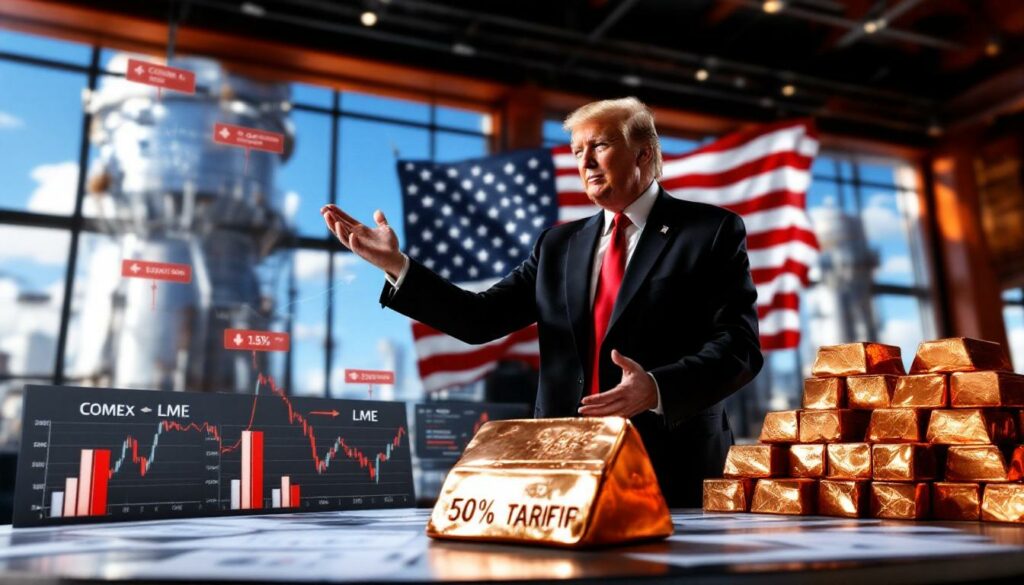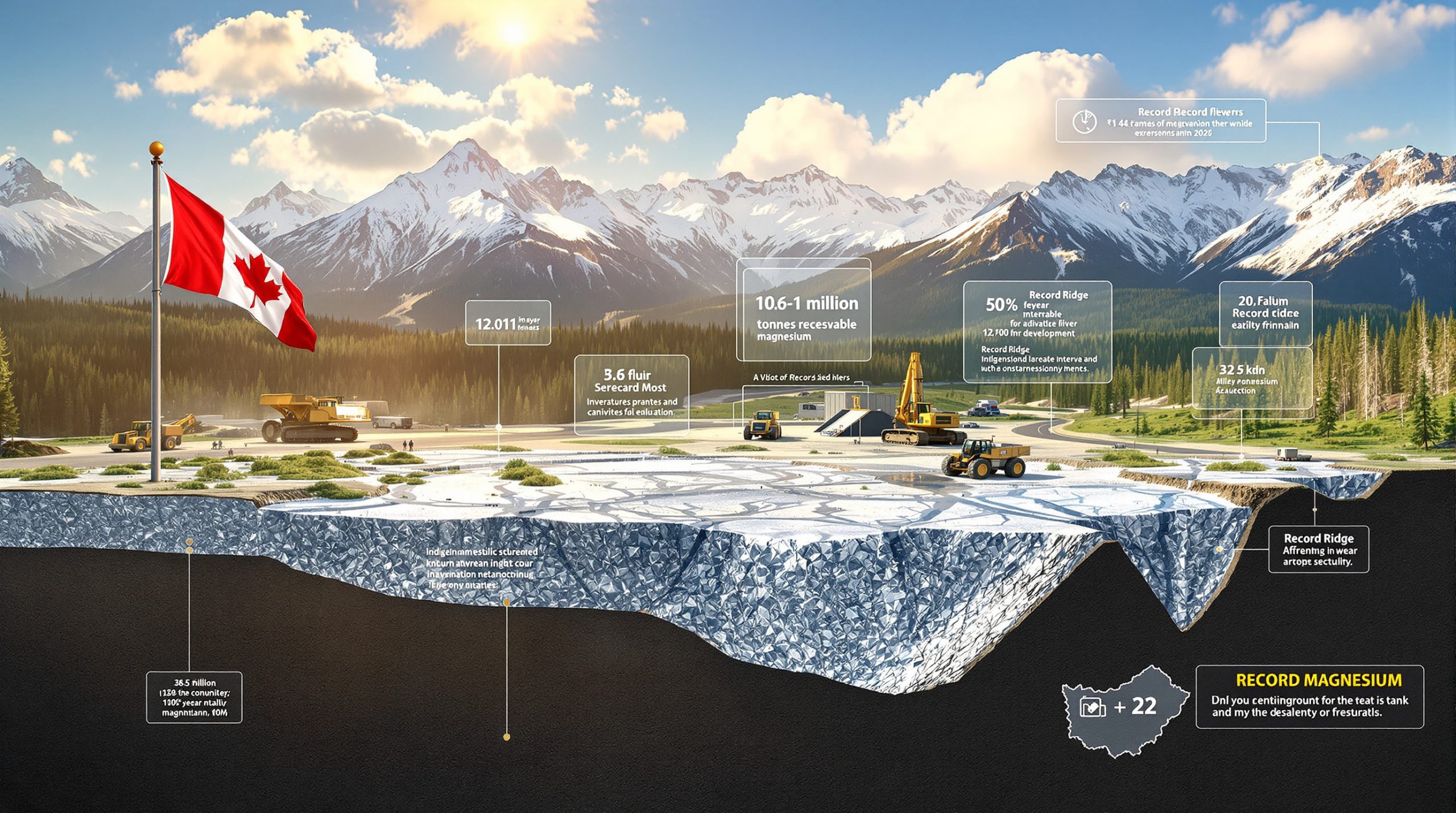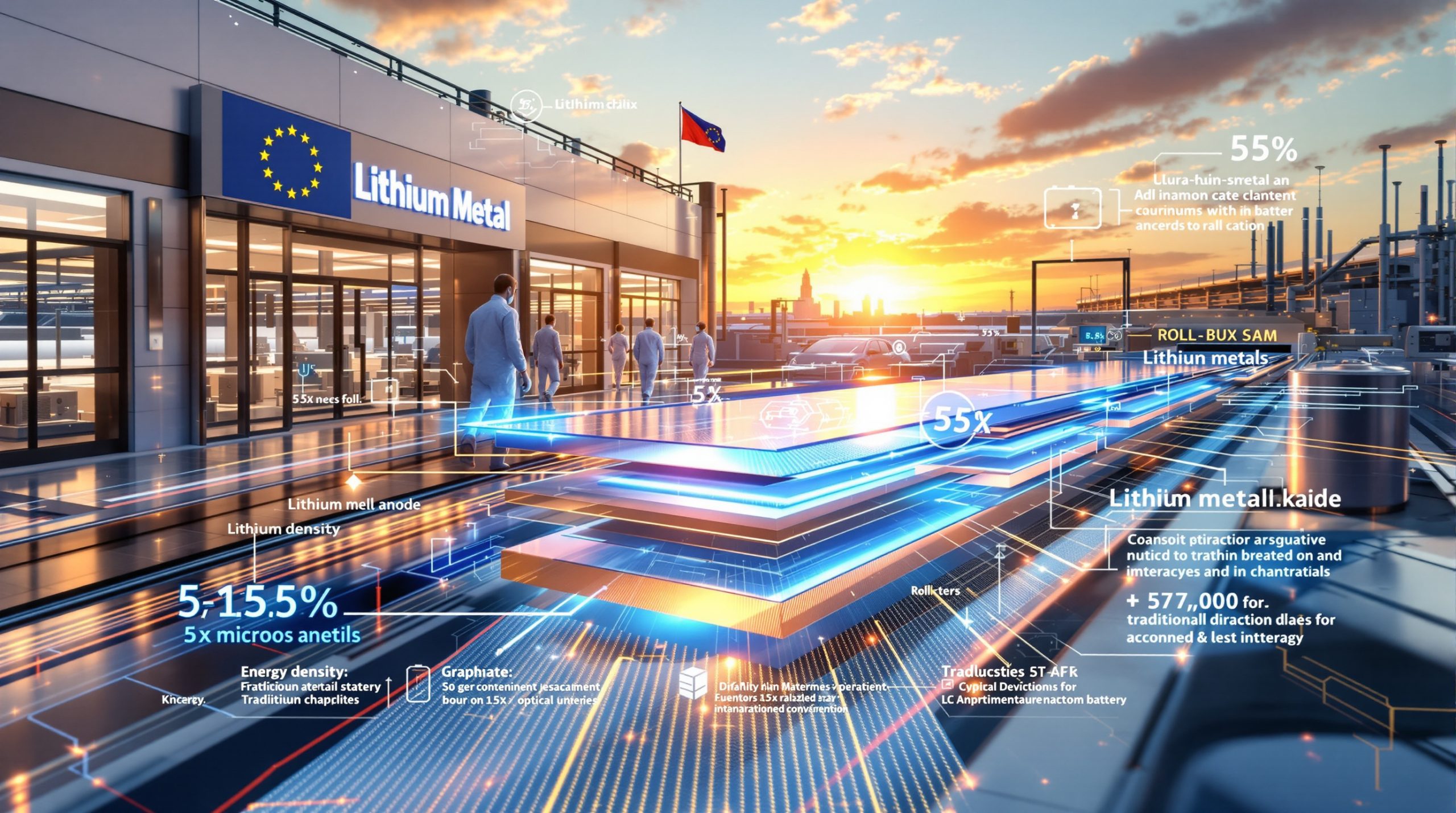Understanding the Tariff Announcement and Market Reaction
In a move that has sent shockwaves through metals markets, Trump's 50% copper tariffs, scheduled to begin August 1, 2025, have caught many industry participants off guard and triggered immediate market reactions.
The tariff rate significantly exceeded analyst expectations, with even industry veterans like Sam Desai, Vice President at RM-Metals, admitting the 50% levy surpassed their projections. "This is substantially higher than what we anticipated," Desai noted in a recent industry statement.
The immediate price impact has been dramatic. COMEX copper futures have surged 38% in 2025, substantially outpacing the London Metal Exchange's more modest 10% gain during the same period. This growing premium of U.S. prices over global benchmarks highlights the market's anticipation of supply constraints in the American market.
What makes these tariffs particularly disruptive is their sudden implementation timeline. With just weeks between announcement and enforcement, copper buyers have had minimal time to adjust procurement strategies or negotiate new contract terms with suppliers and customers.
Regulatory Ambiguity Creates Additional Challenges
Market participants face significant uncertainty regarding which specific copper products will fall under the tariff regime. The lack of official details on product coverage has left distributors and manufacturers questioning whether the tariffs apply only to pure copper or extend to copper alloys like brass and bronze.
Without clear guidance on potential exemptions or enforcement mechanisms, businesses find themselves unable to make informed decisions. This regulatory ambiguity compounds the already challenging market conditions created by the steep tariff rate itself.
How Are US Copper Buyers Responding to the Tariffs?
U.S. copper buyers have implemented immediate strategic changes to mitigate tariffs impact on copper. Import volumes have seen significant reductions, with major distributors reporting approximately 25% cuts to their typical purchase amounts.
"We made about a 25% reduction in our imports," confirmed Sam Desai of RM-Metals, highlighting a trend that appears widespread across the industry. Many distributors have also canceled pre-existing orders where contractually possible, preferring to wait for policy clarification before committing to new purchases.
The uncertainty has created a hesitation throughout the supply chain. Roger Deines, Purchasing Manager at Aviva Metals, explained their cautious approach: "We've put transactions on hold because we simply don't know how these tariffs will be applied. We can't make real business decisions until the policy is clearly defined."
Strategic Inventory Management Becomes Critical
Companies fortunate enough to have built stockpiles earlier in 2025 are now leveraging those inventories as a buffer against immediate price shocks. "We have the option to draw from stockpiles built up earlier this year," noted one industry executive, highlighting how forward-thinking inventory management is providing competitive advantages.
This stockpiling behavior is reflected in broader market metrics, with inventories in COMEX-certified warehouses swelling to seven-year highs. These elevated inventory levels represent both a strategic response to anticipated tariffs and a reflection of slowing order activity as buyers adopt wait-and-see approaches.
For companies without sufficient inventories, the situation is more precarious. They face difficult choices between absorbing tariff costs, passing increases to customers, or seeking alternative sourcing strategies – all within an extremely compressed timeframe.
What Uncertainties Are Plaguing the Copper Supply Chain?
The copper supply chain faces multiple layers of uncertainty beyond just the headline 50% tariff rate. Chief among these concerns is fundamental product classification ambiguity.
"Does it affect copper, does it affect brass, does it affect bronze?" questioned Roger Deines of Aviva Metals. "Really nothing is defined. We can't make any real business decisions until it's all defined."
This lack of clarity extends to potential exemptions. Will certain products or import sources receive special treatment? Will there be a process for requesting exclusions? Without answers to these basic questions, many companies have essentially frozen procurement activities.
Pricing Volatility Creates Additional Risk
Beyond implementation questions, the market also worries about future tariff adjustments. "The biggest worry customers have is that, let's say it's 50% today and tomorrow drops to 40% or 30%, who's going to cover the cost of the drop?" explained Sam Desai, highlighting the risk of being caught with high-priced inventory if tariffs are subsequently reduced.
This volatility creates challenges throughout the value chain. Customers are increasingly resistant to accepting tariff-inflated prices, putting pressure on distributors and manufacturers who cannot simply absorb such substantial cost increases. As one industry insider noted, "The customers don't want to pay the duty on it — it's too high."
Without pricing stability or regulatory clarity, many transactions remain in limbo, creating ripple effects throughout copper-dependent industries.
How Will Tariffs Affect Different Market Participants?
The US tariff effects vary significantly across different segments of the copper value chain, creating winners and losers throughout the industry.
Impact on Distributors and Traders
For distributors and traders who serve as intermediaries between global suppliers and domestic users, the tariffs present immediate operational challenges. Import activities have been dramatically curtailed, with major distributors reporting 25% reductions in purchase volumes.
Those holding existing inventory face difficult decisions about pricing strategy. Charles Bareijsza, CEO at Metals Associates, described the communication challenges: "I called our largest customer, and I said to them, 'Be prepared, there's going to be some problems with the copper pricing.' Unfortunately, we have to pass the increase to the customers, and we have no idea how they're going to handle it. For us, it's a very confusing time."
Inventory holding costs also create financial pressure as companies warehouse materials while awaiting market clarity. This ties up working capital and creates carrying costs that weren't accounted for in earlier financial projections.
Consequences for Manufacturers and End-Users
Manufacturers face significant input cost increases that threaten margins and competitiveness. Those reliant on specific imported copper products have limited immediate alternatives, particularly for specialized grades or forms.
Procurement strategies are being rapidly adjusted, with many manufacturers drawing down existing inventories while developing contingency plans for extended high-price scenarios. Some are exploring material substitution where technically feasible, though this often requires extensive redesign and testing.
Production disruptions remain a genuine risk if supply chain adjustments cannot be implemented quickly enough. For time-sensitive projects, schedule delays may result from material unavailability or cost-prohibitive pricing.
What Are the Broader Economic Implications?
The ripple effects of Trump's 50% copper tariffs extend far beyond the metals industry itself, potentially impacting critical national priorities and economic indicators, according to a recent analysis from Reuters.
Critical Infrastructure Concerns
Copper is valued in power infrastructure for its conductivity — making it key for both the energy transition and the data center boom. Projects ranging from electrical grid modernization to renewable energy development rely heavily on copper inputs.
Higher copper costs may delay implementation timelines or increase budget requirements for these essential infrastructure initiatives. This comes at a particularly challenging time as the U.S. pursues ambitious energy transition goals requiring substantial new copper deployment.
The data center sector, already experiencing rapid growth to support AI and cloud computing expansion, could face additional cost pressures as copper-intensive electrical systems become more expensive to build and operate.
Potential Inflationary Pressures
Some industry experts have expressed concern that inflation will rise as tariff costs propagate through supply chains, which could put pressure on the U.S. to reconsider or modify the tariff policy.
Construction, electronics, automotive manufacturing, and numerous other sectors will likely experience input cost increases as copper prices remain elevated. The extent to which these costs are absorbed by producers versus passed through to end consumers will determine the inflationary impact.
If widespread price increases do materialize, policymakers may face difficult trade-offs between stated industrial policy objectives and inflation management priorities.
Will Domestic Copper Production Increase?
A core rationale behind the tariffs is stimulating domestic copper production and processing capacity. However, industry experts question how quickly these changes can materialize.
Investment Outlook for US Copper Industry
It remains unclear how quickly investments into the U.S. copper industry will begin flowing and how significant they will be. Developing new mining operations typically requires years of permitting, financing, and construction before production begins.
Expanding processing capacity presents fewer geological challenges but still involves substantial capital investment and lead time. Given the recent volatility in policy, potential investors may hesitate to commit funds without confidence in long-term tariff stability.
The gap between current domestic production capabilities and total U.S. demand remains substantial, suggesting that even accelerated investment would take years to meaningfully reduce import dependency, as highlighted in a recent US copper investment insight report.
Supply Chain Restructuring Possibilities
The tariffs could potentially accelerate reshoring of copper-intensive manufacturing, particularly for products where copper represents a significant portion of total cost. However, this restructuring faces numerous obstacles including labor availability, facility costs, and global competitiveness concerns.
Alternative sourcing strategies are being actively explored, including increased reliance on recycled copper. The U.S. already has significant copper recycling infrastructure, but expanding capacity requires both investment and reliable scrap material streams.
Some manufacturers may explore redesigning products to reduce copper content where technically feasible, though such changes typically require extensive testing and qualification processes.
FAQ: Key Questions About Copper Tariffs
Which industries will be most affected by the copper tariffs?
The impact will be particularly pronounced in sectors with high copper intensity. The construction industry, which uses copper extensively in electrical wiring, plumbing, and HVAC systems, faces significant exposure. Recent market analysis suggests residential construction costs could increase by 2-3% due to higher copper input prices.
Electronics and appliance manufacturing represent another vulnerable sector. Copper is essential for motors, wiring harnesses, and circuit boards found in everything from refrigerators to smartphones. These manufacturers often operate on thin margins, making tariff absorption particularly challenging.
The automotive industry, already navigating complex supply chain transitions toward electrification, faces additional complications. Electric vehicles typically contain substantially more copper than traditional internal combustion vehicles, making this sector particularly sensitive to rising copper demand.
How do these tariffs compare to previous metal tariffs?
While the transcript doesn't provide direct historical comparisons, these copper tariffs appear to exceed the scale of previous metals trade actions. The 50% rate surpasses the 25% steel and 10% aluminum tariffs implemented in prior administrations, representing a more aggressive approach to industrial policy.
Implementation approaches also differ. Previous metals tariffs sometimes included country-specific exemptions or allowed for product exclusion processes. The current copper tariffs, as currently understood, lack these nuanced mechanisms, though final implementation details remain pending.
Market adaptation patterns suggest companies with experience navigating previous metals tariffs may have advantage. Those who developed alternative sourcing strategies or pricing models during earlier trade actions may be better positioned to respond to copper market disruptions.
What alternatives do US manufacturers have?
Domestic sourcing options exist but face capacity constraints. U.S. copper producers currently cannot meet total domestic demand, particularly for certain specialized products. Expanding this capacity represents a long-term rather than immediate solution.
Product redesign possibilities include material substitution where technically feasible. Aluminum represents a potential alternative for some applications, though it generally offers lower conductivity and different physical properties that may require significant engineering adjustments.
Price increase pass-through strategies are being widely implemented, though with varying success. As one distributor noted, "The customers don't want to pay the duty on it — it's too high." This resistance creates difficult negotiations throughout the supply chain.
Market Data and Statistics
| Metric | Value | Context |
|---|---|---|
| Tariff Rate | 50% | Higher than market expectations |
| Comex Copper Price Increase (2025) | 38% | Compared to 10% on London Metal Exchange |
| Implementation Date | August 1, 2025 | Less than 3 weeks from announcement |
| Reported Import Reductions | ~25% | Based on distributor statements |
| US Warehouse Inventory Levels | 7-year high | Result of pre-tariff stockpiling |
Expert Perspectives on Tariff Impacts
Industry Distributor Insights
Distributors have implemented various operational adjustments to navigate the new tariff environment. Import reductions of approximately 25% represent the immediate response, with many companies canceling orders where contractually possible.
Customer communication strategies focus on transparency and advance notice. As Charles Bareijsza of Metals Associates explained: "I called our largest customer, and I said to them, 'Be prepared, there's going to be some problems with the copper pricing.'" This proactive approach aims to maintain relationships despite inevitable price increases.
Inventory management approaches include strategic holding of existing stocks. "We're going to hold it, and then see what happens in a couple months," explained Sam Desai of RM-Metals, highlighting how distributors are postponing sales while awaiting policy clarity.
Market Analyst Viewpoints
Short-term copper price prediction models remain elevated as the market absorbs the tariff shock. The 38% increase in COMEX copper prices during 2025 reflects both actual supply constraints and speculative positioning ahead of the tariff implementation.
Supply chain restructuring predictions suggest a gradual shift toward increased domestic processing capacity, though with significant lag times. The capital-intensive nature of copper production facilities means that meaningful capacity expansion would likely take years rather than months, according to a detailed Mining.com analysis.
Potential policy evolution scenarios include future exemptions or modifications if economic impacts prove severe. As the transcript notes, "Some industry experts have expressed concern that inflation will rise in the meantime, which would put pressure on the US to backtrack on the levies."
Disclaimer: This article contains forward-looking statements and market predictions that represent current assessments rather than guaranteed outcomes. Commodity markets are inherently volatile and subject to numerous factors beyond tariff policies. Readers should consult financial advisors before making investment decisions based on this information.
Want to Spot the Next Major ASX Mineral Discovery?
Discovery Alert's proprietary Discovery IQ model delivers real-time notifications when significant mineral discoveries are announced on the ASX, helping investors capitalise on major opportunities before the broader market. Explore why historic discoveries can generate substantial returns by visiting Discovery Alert's dedicated discoveries page.




